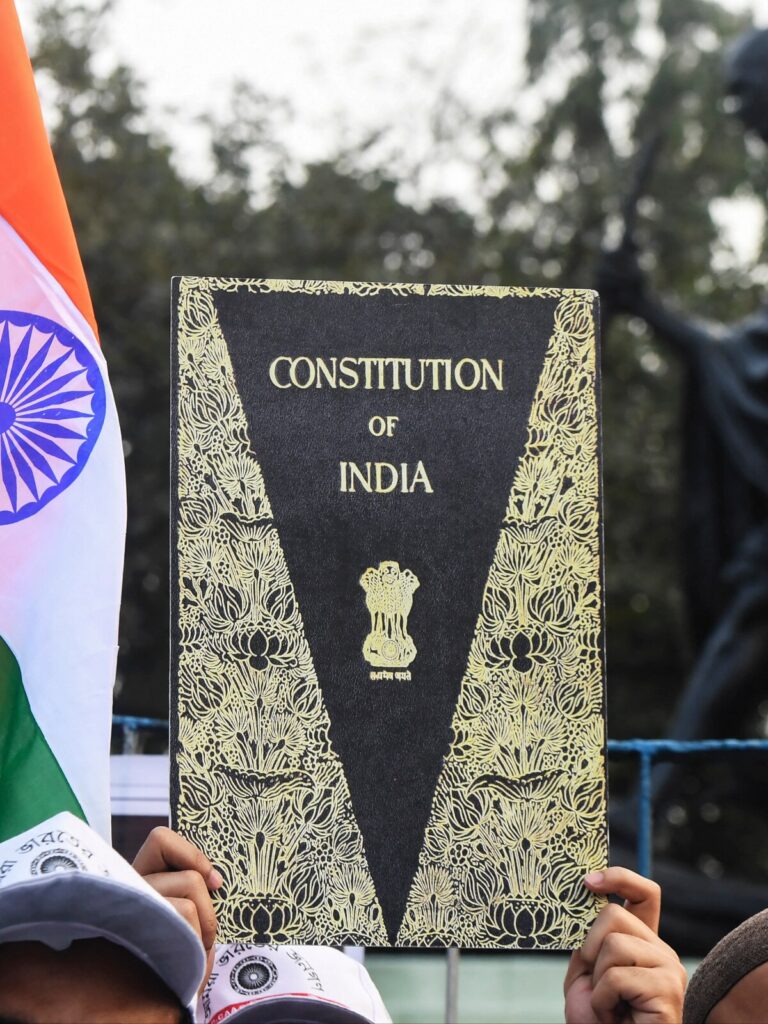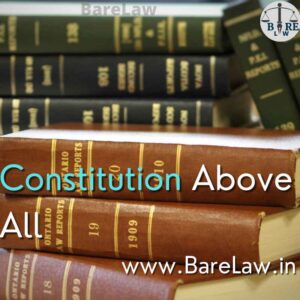Simplifying Your Life & Law | Legal Drafting services

A famous English proverb says, ‘face is the index of the mind’, so does the term ‘Preamble’ mean in the ordinary sense to its subject. Not differing much from the former meaning, legal terminology describes the same as an introduction to legislation or a statute. Similarly, the Indian constitution, in the stricter sense, acts as supreme law of the land and its preamble acts as an introduction to the constitution. Preamble introduces the objectives of any law when it tries to carve the society on specific principles. It is important to note that no philosophy of a nation and its objectives would ever be understood without reading the preamble of one’s constitution. This article tries to analyze the importance of preamble to the Indian constitution and to the citizens, who form the ultimate stakeholders of the constitution.
Introduction:
Having equated its synonym to ‘Introduction’ to any law, the Preamble of the Indian constitution entails its aim of setting certain objectives to the supreme law and requires all other sub-ordinate laws to be in line with its objectives enshrined. It helps the parliament to derive the intention behind the constitution and also the constituent assembly members. It not only helps the legislators but also the judiciary in case of interpretation of any provision within the constitution.
Preamble – A tool to derive the Intention of Constitution:
To know how far the preamble helps us to derive the intention of the constituent assembly, we could take instances from the debates among the members of the constituent assembly on the preamble. The debate on the Preamble was held in Constituent Assembly on October 17, 1949. Here, we are not much concerned about all the amendments that were suggested by the members of the constituent assembly on the preamble. The most concerned and contemporarily relevant part is concerning the question of whether the term ‘In the name of God should be included in the preamble or not, i.e. ultimately the question of secularism arose. Much anticipated appeal came from Purnima Banerji, a member of the United Provinces. She appealed that there should be no discussions on the inclusion of the term god in the preamble of the constitution. But the same was put forward by HV Kamath, stating to include,
‘In the name of God, we, the people of India, having solemnly resolved to constitute India into the Sovereign Democratic Republic, ….assuring the dignity of the individual and the unity of the nation in our Constituent Assembly, do hereby adopt, enact and give to ourselves this Constitution’
The significance here is that the inclusion of the term was debated too long and not just as it may be prescribed by any of the members of the constituent assembly.
Preamble – Part of the Basic structure of Constitution:
The question of whether the preamble is part of our Indian constitution arose in the case of In re Berubari, where the apex court held that it is not regarded as part of the statute and hence, at that time, it was held to be different to that of Indian constitution. It was in the late 1950s and hence the court had a narrow view on the preamble, stating it as an assist that helps the judiciary while interpreting any provision of the constitution. But the stance had changed, which ultimately provided a new interpretation from the country’s supreme adjudication body. In 1973, with the arrival of basic structure doctrine came new-fangled and a wider interpretation in the case of Keshavananda Bharathi v. the State of Kerala. The case overruled the previous judgment in the Berubari case and laid down that Preamble does hold importance and forms part of our constitution. It also noted that the entire constitution should, thereby, be read in the light of vision that is enshrined in the Preamble. In the words of the then Chief Justice Sikri, under whom the quorum decided the historic judgment, observed that “It seems to me that the Preamble to our Constitution is of extreme importance and the Constitution should be read and interpreted in the light of the grand and noble vision expressed in the Preamble” It is important to note the interpretation that has been made in Keshavananda Bharathi’s case because it enabled the two of three main pillars of our democracy to view preamble as a guiding principle for all other laws enacted before and after the case’s interpretation. It also carries the identity of the entire constitution and binds on every part of Indian democracy. In this sense, we can see that Preamble has the supreme importance among all legislators that they have the responsibility to carve the laws in a way that enables the vision of preamble, which became part of the basic structure. It is well-defined law, from then, that no law should go in violation of the basic structure, and if so it would stand ultra vires to the constitution as a whole.
Preamble and Dicey’s Rule of Law:
It is a well-defined fact that one of the main purposes of the preamble of the Indian Constitution is to entail the sources that are, from which the Constitution comes or derives its power. As held in the Keshavananda Bharathi case, it is not the sole source of power but provides certain sources from where the constitution derives its power. A closer look at A.V. Dicey’s proportion of Rule of law proves that the government or the state is governed by law and not by any ruler. It makes clear that even the ruler is governed by law. Hence, under rule of law, the ruler is not the king, but supreme law is the king. Dicey puts forth three pillars of rule of law. Firstly, absence of any arbitrary power, where he stressed the fact that no man is above law and all are subjected to law. Secondly, equality before the law. Finally, he stressed Individual liberty. In that manner, the preamble of the Indian constitution introduces the constitution with the term ‘We the people and not the otherwise. The term democracy in the preamble can also be equated to the principles puts forth in Dicey’s rule of law. Like Rule of law, Preamble connotes a higher kind of law that is reasonable and non-discriminatory. Thus preamble resembles Rules of law in one way or the other.
Conclusion:
Preamble resembles the idea that no law should be directly enacted without proper discussions among any of the legislations. It should not be at the whim and fancies of any individual, as happened during the emergency and not at the discretion of the majority government, which exists today. I make the latter note because, to be precise enough, justice is not what the majority agrees and renders upon others. It’s about the reasoning that could be derived from every move of the government. The only problem that could be seen is that there exists a conflict between parties in the parliament, which also sows the seeds for expeditious legislations like these. This problem is elementary and it has to be cleared out as soon as possible. Unlike in England, where power lies with the law-making body, which is Parliament, Indian democracy sets its power over the constitution and its principles. Judiciary, as a neutral person in this juncture, should play a major role as part of its power conferred through judicial reviewability and ought to uphold the basic feature of the constitution. Thus, the Preamble of our Constitution declares India to be “sovereign, socialist, democratic and republic”, and laws in India SHOULD ONLY BE constructed above it.
You may also like to read:
-
05 Jul 2021
Opinion
Maratha Reservation: From Legislature of Precedent
-
06 Aug 2021
Case Briefs
Case Brief of Justice K.S.Puttaswamy (Retired). V. Union of India and Ors, 2017 (Right to Privacy – A Grandstand View)
-
19 Aug 2021
Know Your Law
Citizenship laws in India
-
24 Aug 2021
Know Your Law
Other authorities under article "12" of Constitution of India
-
09 Sep 2021
Know Your Law
CONCEPT OF LEGAL AID IN INDIA
-
12 Sep 2021
Know Your Law
Constitution above all







